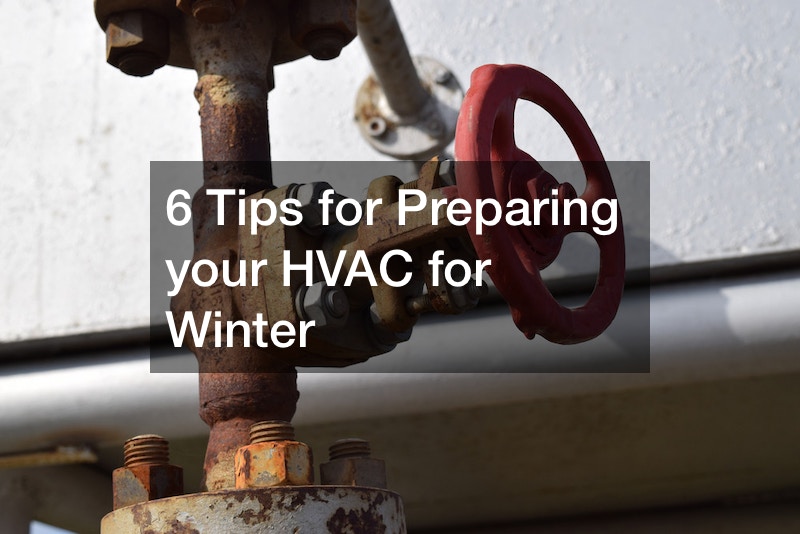
Many homes rely on HVAC exclusively for their air purification and other needs. This means that it’s important to take good care of your HVAC unit and service it as regularly as is recommended, at least twice each year. You should have an easy time finding air conditioning companies to help you keep your HVAC in good shape, whether you search online or physically.
The professionals you enlist should be well-versed in AC vent design and know everything about an AC vent system. This is because they should guide you on the best maintenance steps and advise you on how to make sure that your system is in good shape, something that should be backed by experience.

When you get advice about what you need to do, it’s important for you to follow it, as it can save you a lot of trouble. You may not have to do online searches for things such as “AC vent meaning” or “AC ventilation duct” if you have an expert at hand to explain these details to you. As such, taking time to find a good HVAC service provider is going to be a great investment to make as far as your home’s comfort and safety go.
updated 10/26/2022
If you have a problem with your AC unit, you don’t have to know all about HVAC in order to get it fixed. If you know about HVAC technician shops in the area, you can call one of those to come out and inspect your unit. Talk to them about the AC air circulation in the house and let them know what the problem has been. They will let you know what’s wrong with it and how much repairs will cost.
It may be the 3 port refrigerant manifold or another part that is broken, and the technician will be able to make most units work well again. They are highly trained in AC unit repair and installation. If you need a new unit, it will likely be the same company that you buy your new AC from. Installation won’t take long, and you will have a brand-new unit that’s more energy-efficient.
To find an AC air conditioner near me, you need to go to the business listings for AC companies in your area. This will give you a wealth of information about local companies. This info can help you to decide on the best company to get your repairs from.
The HVAC system runs all year round; therefore, it is best to ensure it is in good shape when a new season approaches. The last thing you’d want is to deal with a cold business or home when winter kicks off. The first step in ensuring your HVAC system will serve you better is scheduling a checkup by a professional technician. Many people offer HVAC services, and it’s up to you to find a competent one. They’ll check and inspect the AC and heat furnace, heat pump, boiler and make the necessary adjustments. An HVAC technician will also change the air filters, which protect the system from debris and dust. Dirty AC air systems cannot control heat or cold to the expected standards.
If you don’t have a programmable thermostat, consider installing one. This will ensure your home cools or heats to your ideal temperature. Also, make sure your home is well insulated before the changing of the seasons. Seal all the windows, doors, and basement spaces where air can leak. This stops cold or hot air from entering the house, ensuring your AC and heating unit systems work efficiently. If you don’t know about HVAC technicians, you can ask your friends or family for recommendations.
Fall is a busy time for many homeowners. Many are busy with back-to-school activities, and some may be gearing up for Halloween. Setting aside time to enhance your HVAC system is, nonetheless, crucial.
In this article, we look at some practical steps you can take when preparing your HVAC for winter. The tasks range from maintenance of your system, insulating your home, and safety precautions you can take.
Examine Your HVAC Unit
The first crucial step in preparing your HVAC for winter is to assess your unit. You don’t want to be in the cold due to a failure that you could avoid by taking easy preventive steps.
You can contact HVAC services if the equipment is in an inaccessible location, such as the attic. However, you may start by removing anything that may block the outdoor condenser unit. Manufacturers recommend leaving at least 3-feet clearance to allow for maximum airflow.
Leaves, rocks, and branches can block the vents of your HVAC system. If you find that obstructions around your unit are frequent, you should consider having a barrier around it. Maintaining clearance is crucial for optimizing the output of your AC.
The installation of your outdoor unit should also give room for your equipment to breathe. If there happens to be another condenser nearby, it should also be at least 2 feet away. If it is right next to the wall, you should consider getting an AC professional to review the viability of the installation.
You may also cover your air conditioner to prevent dust and debris from getting into the condenser. It is, however, critical that you do not restrict airflow by completely blocking the outdoor or rooftop unit. There are suitable mesh-type covers available that can stop debris without stopping the flow of air.
You can clean the vents and the outer part of the condenser to ensure the free flow of air. Use a vacuum to remove debris that has been accumulating throughout the year. Remember to shut the power off before you start cleaning.
Take the time to examine the belt assembly inside your system. It helps to maintain the airflow within your home by keeping the blower moving. If there are signs of cracks, it could be moments before it breaks down and hinders the flow of air into the interior. The belt will wear out at a much faster rate when you are in areas with hot climates.
Also, take time to examine the blower fan limit control. If the fan keeps cycling on and off, the switch may be on overdrive, which means it will keep running. An adjustment of the switch may be the solution. However, you should consult HVAC services experts if the issue persists.
When preparing your HVAC for winter, pay attention to any sounds coming from your air conditioning system. Rattling, buzzing, and hissing could point to faults, or they could be signs of a failing unit. Rattling usually indicates that your system has obstructions on moving parts.

Cleaning Your Air Filters and Ducts
When preparing your HVAC for winter, the most recurring problem with many AC systems is an obstruction to airflow. Your air filter blocks debris and dust from getting into the unit. Depending on the type of filter you have, you should clean or replace it at least once every three months.
Cleaning the filter is one of the simple maintenance steps you can take to improve the function of your unit. Some estimates suggest you can boost your equipment’s output by up to 15% by cleaning or replacing it.
If your system keeps cycling on and off, there may be obstructions within the duct. When the system cannot draw the necessary air to heat your home, it will use more energy. Your furnace maintenance expenditure may spike during the winter when there is a spike in heating oil prices.
Your ducts may accumulate pollutants such as pet dander, microorganisms, mold spores, and dust mites. When that happens, allergens will eventually circulate into the interior. Cleaning your ductwork, therefore, maintains your home’s indoor air quality.
During cleaning, a professional can inspect your ductwork for leakages. Not only should your ducts be free from pollutants, but they should also be airtight. A leak will introduce debris and dust from the crawlspaces that may contain a significant number of contaminants.
Air duct sealing can improve indoor air quality and reduce your home’s energy consumption. Sealing your ductwork is a task that is best left to professionals as they have the requisite tools and expertise. If you make mistakes, the expenses to fix them may end up being higher than you expected. It is better to seek professional help, right from the start.

Energy Efficiency and Insulation
Keeping your home energy efficient is another critical step to remember when preparing your HVAC for winter. Your home structural envelope can minimize the air conditioning needs of your home in both cold and hot weather. The more energy efficient it is, the lower the demand for fuel and efficient heating systems.
You can hire a residential foundation repair service to inspect the insulation around your home. The basement accounts for about 20% of heat losses around the house. Often the basement does not have adequate insulation around it. There could also be cracks in the foundation or around the windows.
The attic is another area of your home that may need insulation. It is the area where hot air will rise when your furnace is running. The standard requirement is about 26 inches of loose-fill, rolled batt, spray foam, or other viable insulation materials.
You can always bundle insulation installation with other home repair tasks. That way, you can minimize labor costs while still getting the benefits of a professional service. You can hire a roof inspection service to evaluate the quality of your insulation. The choice of materials will depend on your region and the structural design of the building.
You can determine the insulation rating using the R-Value. They indicate the number of hours it will take to resist heat flow. The R-Value recommendations also depend on the climate zone of your region. For example, the recommended attic R-value rating for places with hot weather like Florida is R-30 to R-49. You can consult your local roofing business for the materials and installation requirements for your climate.

Test and Adjust Your Thermostat
Most homeowners today use a programmable thermostat for more efficient heating and added convenience. When you are preparing your HVAC for winter, it is wise to test the device to ensure that it is accurate.
If you don’t have a programmable thermostat, you should consider getting one. You can adjust the device to switch on at a predetermined period. You can schedule it to turn down as you are leaving your home for work. You could also program it to turn back on half an hour before you arrive home.
A programmable thermostat keeps the difference in temperature at a minimum, which prevents it from running unnecessarily. You can adjust the settings to 70 degrees Fahrenheit when there are occupants in the house. You can then schedule a lower temperature when you are away from home or at night when you are sleeping.
The convenience of programmable thermostats further enhances their energy efficiency. You can change settings while you are at work through a mobile app. Some devices have extra features, such as voice control. By making temperature regulation convenient, smart thermostats increase accessibility, which in turn, reduces heat losses.
One other advantage of smart devices is that they protect your system from frequent breakdowns. Programmable thermostats are accurate, which limits the amount of work done by your equipment. As a result, they minimize the wear and tear experienced by your heating system.

Fire Protection and Safety
Your furnace is one of the heating equipment that is responsible for approximately 19% of home fires nationwide. When preparing your HVAC for winter, you can reduce the risks of a hazard in your home by taking fire protection precautions.
Always ensure that the area around your furnace is clear of anything that can catch fire. Some of the flammable items you may have may include portable air conditioners, plastic bags, and gasoline containers. Ensure flammable materials are not less than 3 feet away from your heating equipment.
You consult a roofing company to schedule an inspection of your chimney at least once a year. A professional can quickly detect serious hazards, such as carbon monoxide leakages. According to CPSC (Consumer Protection Safety Commission), CO poisoning is responsible for more than 150 deaths.
Keep in mind, that any process that involves combustion can trigger a CO poisoning hazard. So, your space heaters, stoves, furnaces, and barbeques can also be dangerous sources of colorless toxic gas.
Regulations require the installation of smoke detectors in your ductwork to prevent CO poisoning. The device can provide the earliest signs of carbon monoxide, as you are preparing your HVAC for winter. Their mechanism will shut down the fans and blowers to prevent the recirculation of the toxic gas around your home.
Schedule HVAC Maintenance
HVAC maintenance is another critical task that you shouldn’t overlook when preparing your HVAC for winter. There are tasks that you can do without having to hire a professional, such as clearing the vents and replacing or cleaning your filter. However, for more complex tasks, following Fundamental HVAC maintenance tips is essential to ensure the system runs smoothly.
The EPA recommends scheduling professional HVAC services for technical tasks such as cleaning the ducts. A professional tune-up ensures the equipment is clean, has no faults, and is in pristine condition for winter. Some of these Home HVAC system repair essentials include:
- Checking Loose Connections: Loose electrical wires can obstruct the moving parts of your equipment. The wiring may limit the function of your system and could be a potential fire hazard. Scheduling maintenance ensures that such minor faults do not cause a total breakdown due to negligence. If you’ve noticed rattling sounds, it may be that wires are blocking some components.
- Cleaning Components: There are parts of your furnace that will require regular cleaning to eliminate debris and mineral buildup. One example is the heat exchanger, which may lose its heating capacity due to layers of debris and grime. Your refrigerant ought to be free from mold and dust, which can insulate the tubes.
- Lubricating Moving Parts: Your blower motor will need lubrication regularly. An air conditioning professional will determine if your system is the type that requires oiling. They can also recommend some routine tasks to maintain your blower for the optimal performance of your system.
- Evaluate the condition of components: Your AC service professionals have the expertise to check sensitive parts of your system. During maintenance, they will examine the ignition switch to determine if it’s the circuit or the component that’s faulty. Certified technicians can also check the level of the refrigerant to top up the fluid where necessary.
- Inspect ductwork: Mold spores and grime may get to inaccessible parts of your system. A homeowner may not have the tools and expertise to pinpoint such issues. That’s why it is best to hire a technician to inspect and seal your ductwork.
- Carbon Monoxide Detectors: To minimize the risk of a carbon monoxide leak, an AC professional will ensure the ducts are clean and airtight. A technician has the expertise to check the fire and CO detectors before the winter season starts.
When preparing your HVAC for winter, it is wise to consider replacing your unit if it is getting old and inefficient. An inefficient system raises utility bills, increases the risk of multiple repairs, and may even cause hazards. During maintenance, you can consult a furnace repair technician to determine if it is time to replace your unit.
The process of preparing your HVAC for winter involves many aspects of your home. You may need a plumber or roofing service to repair your insulation or check for flooding to prevent mold growth. Despite the extra expenses, the convenience, as well as energy and cost savings, will make it worthwhile in the long run.






